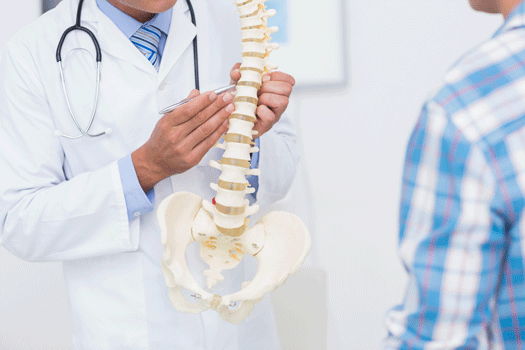
When a discectomy is performed, it is common for only the part of the disc that is irritating the nearby nerve to be removed. This is done to preserve spinal motion in the affected area and avoid the need for an accompanying fusion surgery. However, there are times when the entire disc is removed. This article discusses what may happen to the disc after a discectomy in various situations.
The Disc May Have No Further Issues
Due to advances in how spine-related surgery is performed, precautions can be taken with improved precision to remove only as much disc material as necessary. For this reason, if your discectomy is successful, you may have no issues at all with the remaining portion of the disc. In fact, it is common for patients to be able to ease back to their normal levels of activity and regular routines when part of the disc remains in place. This is a goal you will be more likely to achieve by:
• Not overstressing your spine
• Getting doctor approval before stepping up your activity level
• Fully participating in your physical therapy sessions
• Reporting any new or unusual symptoms as you heal and recover
• Making an effort to improve your posture, get sufficient sleep, regularly exercise, and eat healthy
Remaining Disc Material Could Shift
If the disc is not fully removed, what is left could move or shift to some extent. If this happens, the remaining disc material may once again irritate a nerve root. Even if this is something you experience, another surgery might not be recommended or necessary. As long as the resulting nerve irritation is not severe or extremely disruptive, physical therapy and other conservative treatments may be sufficiently effective.
A shift of remaining disc material may not occur immediately after a discectomy. It could happen over time due to daily movements and other factors. If this is the case, you may not notice a return of disc-related symptoms until several months or years after your surgery. This is referred to as reherniation, which could also occur if not enough disc material was removed. Your surgeon may recommend additional surgery if nonsurgical treatments fail to provide sufficient relief.
An Artificial Disc May Be Inserted or a Fusion Might Be Performed
If a surgeon anticipates that the full removal of the disc is required, there are two possible options following the surgery. One is the insertion of an artificial disc. This is beneficial when there is a strong preference to retain full range of motion in the affected area. For example, if you are normally fairly active or athletic, you may wish to keep your spine fully flexible by opting for an artificial disc.
Another possibility is fusion surgery if the disc is completely removed. With fusion, the vertebrae above and below the removed disc are joined or fused together with bone grafts and metal hardware, including screws and rods.
Whether a patient has a traditional discectomy, a less invasive microdiscectomy, or spinal fusion surgery, recovery time, pain levels, and other post-surgery issues vary among individuals. An additional factor affecting outcomes is if a large hole in the outer ring of the disc after surgery. If the hole in the disc is larger than a standard pencil eraser, the patient has a significant risk of experiencing a reherniation. Patients with a large hole in the outer ring of the disc are more than twice as likely to reherniate after surgery. These reherniations often require additional surgery or even a larger spinal fusion operation. Barricaid is a bone-anchored device shown to reduce reherniations by closing the hole in the disc after a discectomy, and 95 percent of Barricaid patients did not undergo a reoperation due to reherniation in a 2-year study timeframe. This treatment is done immediately following the discectomy—during the same operation—and does not require any additional incisions or time in the hospital.
If you have any questions about the Barricaid treatment or how to get access to Barricaid, you may ask your doctor or contact us at 844-288-7474.
For full benefit/risk information, please visit: https://www.barricaid.com/instructions.


Comments